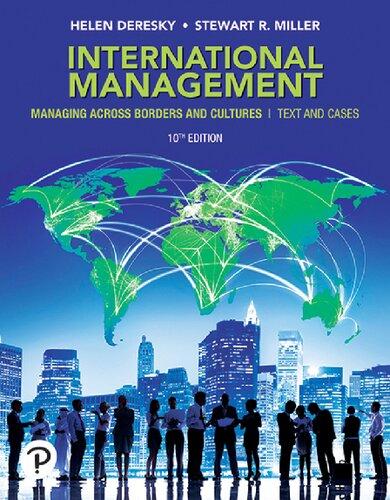11-16. What steps did Mr. Du take to pave the way to a successful relationship between Haier...
Question:
11-16. What steps did Mr. Du take to pave the way to a successful relationship between Haier and Sanyo Electric? As the appetite for cross-border deals increases, business schools are mining insights from corporate couplings that prospered against the odds, in the hope that they hold valuable lessons for managers struggling to overcome cultural divisions. Case studies plunder the past for lessons in how to turn adversity into success. For example, few would have bet on a good outcome when Haier, China’s leading home appliances maker, formed a joint venture with Sanyo Electric to develop refrigerators in Japan — a 2007 episode in corporate history studied by researchers at Iese Business School in Spain.
Speculation was rife among the Japanese workforce that Haier, the majority partner, merely wanted to rip off Sanyo’s know-how. “There was a lot of uncertainty,” says Du Jingguo, Haier’s Asia chief executive, of the deal. “Would we co-operate long term or did we just want to take the technology?”
Culturally, the two companies were poles apart. While Haier promoted staff on merit and paid by results, Sanyo was wedded to the Japanese tradition of promoting by age and length of service. Undeterred, Mr Du split the Japanese workforce into small groups and night after night, over rounds of drinks, he listened to their concerns.
In the end, his softly-softly approach paid off. Guided by what he learnt, Mr Du began to promote younger employees, but in a way that spared the pride of their seniors, who were given honorific titles and opportunities to work beyond retirement to compensate for their loss of expected income.
His bridge-building helped pave the way for Haier’s acquisition in 2012 of Sanyo’s whitegoods business in Japan and other south-east Asian markets — though he paid a price. “After two years of drinking, I developed a gastric ulcer,” he says.
Acquisitions are an important way for businesses to grow and gain knowledge. With global M&A activity at highs last seen in 2007, deals today often cut across borders, with emerging market companies among the biggest spenders. In 2016, according to Deloitte, Chinese acquirers spent 10 times more on European businesses than vice versa.
However, studies typically find that between 40 and 70 per cent of all deals fail to pay back.
A third of companies blamed differences in corporate culture for their lack of success in one of only a few quantitative studies of post-deal integration, conducted by Aon Hewitt, the consultancy, in 2011.
Step by Step Answer:

International Management Managing Across Borders And Cultures Text And Cases
ISBN: 9780135897874
10th Edition
Authors: Helen Deresky






